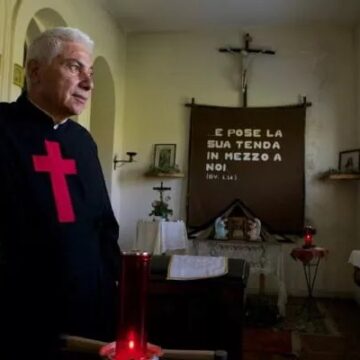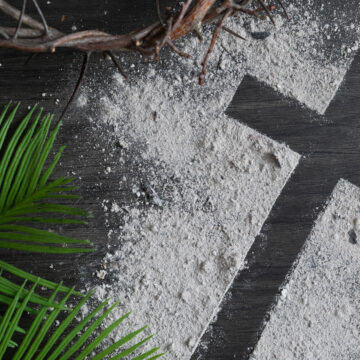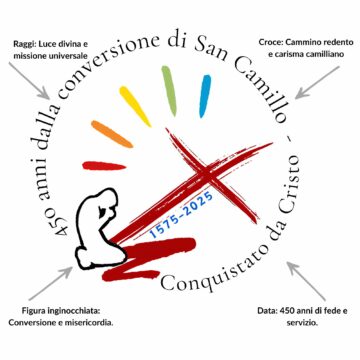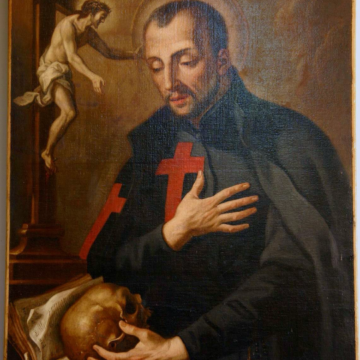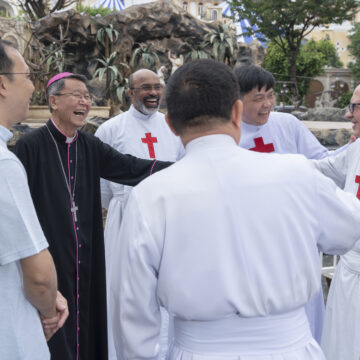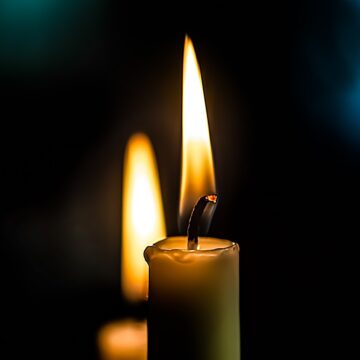Greetings of Father Paolo Guarise, the Vicar General of the Order, to those Taking Part in the Three Days of Camillian Spirituality:
THE CHARISM OF ST. CAMILLUS: A PRECIOUS GIFT IN FRAIL HANDS
Introduction to the Three Days of Spirituality
The St. Mary Magdalene Community, General Chapter Hall, 18-20 March 2014
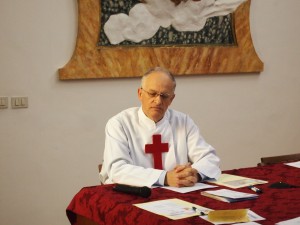 A fraternal greeting to all of you who in large numbers have come to this appointment of reflection and prayer.
A fraternal greeting to all of you who in large numbers have come to this appointment of reflection and prayer.
It is a pleasure and a privilege to gather together in this hall – the General Chapter Hall which has now been transformed into a museum – which was the home of the first Camillian community; on this floor were the bedrooms of the religious; here under what is now the sacristy there was the refectory of the community; and behind me there was the infirmary – now called the cubiculum – where St. Camillus spent the last three months of his life as a sick man before dying on 14 July 1614.
The environment in which a person lives is important in that it conduces, or does not conduce, to living in a certain way, that is to say it helps to prepare the interior disposition of an individual, creating a suitable, positive and creative humus. Well, what more than this place and these relics (for we Camillians more than being objects or possessions these things that belonged to Camillus specifically constitute relics, and in a literal sense: things bequeathed, left behind, after being used by St. Camillus)…as I was saying what more than these relics can remind us of St. Camillus, our Founder Saint, and call upon us to imitate him?
In this sense we conserve here jealously the crucifix that spoke to him and for him detached its arms as though it wanted to embrace him; we keep here the heart itself of Camillus which beat vigorously for more than sixty years, releasing energy of love for the sick; we conserve here his habit – worn out and covered with marks caused by the instruments that he used in his craft; the bandages stained with the blood of his wound (a wound that was open for over forty years and which never closed!!), and I could go on like this for every object that we can see in the three rooms that make up the museum. Moving amongst these precious relics we seem to see Camillus – in a physical sense as well – who after four hundred years passes amongst us, has a smile, puts his hand on our shoulders 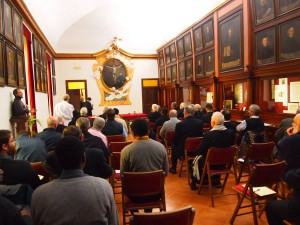 like an old friend who knows us and encourages us. I seem to hear him whisper in the ears of some of us: onward, my son, the Lord has called you to work in his vineyard which is also my vineyard, a vineyard that I cultivated for so many years and then handed over to you so that you could continue my work.
like an old friend who knows us and encourages us. I seem to hear him whisper in the ears of some of us: onward, my son, the Lord has called you to work in his vineyard which is also my vineyard, a vineyard that I cultivated for so many years and then handed over to you so that you could continue my work.
In order to live to the full the jubilee year that we are now celebrating I am convinced that it is indispensable to retrieve at a deep level our personal relationship with God, our vocation – our call – and then our relationship of being sons of our Founder. And then what I believe is important and what I wish for each one of us during these three days of spirituality here in Rome, at the mother house, is to rediscover – so as to then breathe it with two lungs – Camillian spirituality, making it our own. Four hundred years have passed since the death of St. Camillus, but his insight, that is to say his charism, the gift that he received from God, is as valid and as necessary as it has ever been for today’s world. For us it is a challenge to be lived anew and applied in the contemporary context of our society and this Church of ours which are not really so different from those of the epoch of Camillus (the society of the Renaissance, the Church of the Counter-Reformation).
Suffering humans, areas of poverty – both material and spiritual poverty – and the tandem of health and illness remain substantially the same field of work as that of the times of Camillus. This is because the ‘raw material’ that we have to address is the same – the human person with his or her vicissitudes, with his or her surprises. The pillars, that is to say the ethical canons on which we must build a society of love and mercy, are always the same because they do not change with the passing of the centuries. In all likelihood these pillars need a restoration that is not only external or decorative but also profound and retrieves what they were. Four hundred years are no small space of time and it is natural that a monument can be injured by the ravages of time and of history. When I speak about the ravages of time and of history I refer principally to the lack of care of which each one of us is the author, through indifference, individualism or laziness in the face of the urgent needs of illness and poverty.
I thank those who through their contribution, with the addition of their membership cards, help to restore to the Camillian mosaic the finish and shine that it once had, that it has always had, and that it will have, independently 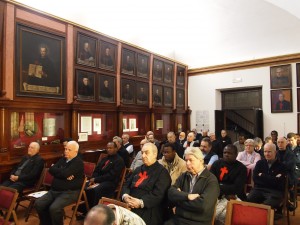 of the ravages of time and of history. I thank the organisers of these three days – Br. Carlo and the staff of the Committee for the Fourth Centenary. I thank ahead of time the speakers and the chairmen who will follow one another during these three days of work. Let us ensure that the four hundred years that we are now celebrating will restore the beauty of the Camillian mosaic so that we can draw near more closely and in a better way to our brothers and sisters in need with that love of a mother of which Camillus was the teacher. This will be possible through a rediscovery of our personal relationship with the Lord who chose us for this special vocation of charity and mercy, which is implemented through community life, through the constant growth achieved through a process of formation, and through the implementation of our charism – all of which are aspects that will be addressed and explored over the next three days.
of the ravages of time and of history. I thank the organisers of these three days – Br. Carlo and the staff of the Committee for the Fourth Centenary. I thank ahead of time the speakers and the chairmen who will follow one another during these three days of work. Let us ensure that the four hundred years that we are now celebrating will restore the beauty of the Camillian mosaic so that we can draw near more closely and in a better way to our brothers and sisters in need with that love of a mother of which Camillus was the teacher. This will be possible through a rediscovery of our personal relationship with the Lord who chose us for this special vocation of charity and mercy, which is implemented through community life, through the constant growth achieved through a process of formation, and through the implementation of our charism – all of which are aspects that will be addressed and explored over the next three days.
I wish you successful work!
Look here at the press information



